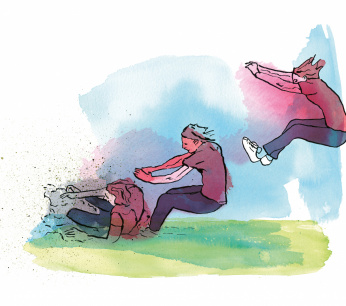Petition for smaller classes signed 44 thousand times
Last weekend, the 'Smaller Classes' petition reached more than 40 signatories. The House of Representatives is therefore obliged to discuss the subject. Step one direction structurally smaller classes in primary and secondary education, according to the AOb.

Image: Pixabay
Education union initiated almost two months ago AOb a petition to clarify the need for classes with a maximum of 21 students in primary and secondary education. Twelve other organizations for pupils, parents and education staff joined. Together they have collected more than 44.000 signatures in recent weeks. Today, the result of the petition was presented to the education spokespersons of the House of Representatives by means of a video.
Eugenie Stolk, president of the AOb: "Normally, we would travel to The Hague to hand over the petition personally to the minister. In times of corona, we opt for this solution. Moreover, we do not focus on the current cabinet on this subject, but on the following. We want that smaller classes will become part of the coalition agreement of the new cabinet in 2021."
Long-cherished wish
Reducing classes is a long-cherished wish of the AObconstituency. At the beginning of this millennium, scientists had some doubts about its usefulness, but now researchers worldwide agree that small classes are beneficial. Both for the learning achievements of the students in the short term, and for the economy in the longer term.
Also the CPB became convinced in 2016, and again underlined last summer that the small class pays off. In a recent survey by the Teachers' Collective - co-initiator of the petition - 90 percent of the 2500 respondents say that small classes help to provide appropriate education. The Ombudsman for Children explicitly mentioned small classes this autumn as a point for improvement in her research into appropriate education among pupils. It would be 'nice for all children if the classes are smaller', wrote children's ombudsman Margrite Kalverboer.
It is realistic to expect workload to decrease in smaller class sizes
What significantly smaller classes do with the workload and job satisfaction of teaching staff has not yet been properly researched. Stolk: “We know that the majority of our supporters really want this. And until researchers know more about the effects on staff, we think it is very realistic to expect workloads to decrease in smaller class sizes. If you translate that into lower absenteeism due to illness and thus less replacement, then so much profit can be made with this measure. ”
De petition is still open today. The AOb thanks everyone who signed her!
Read more?
When this spring in connection with corona the classes at least halved, made the Education Magazine a cover story about the small class, featuring teacher responses to teaching in smaller groups.
In this article Eugenie Stolk explains how the petition can be reconciled with the teacher shortage and why, for example, a maximum of 21 students was chosen.
At the beginning of the nineties, large investments were already made in smaller classes. This money eventually evaporated. Check the longread.


